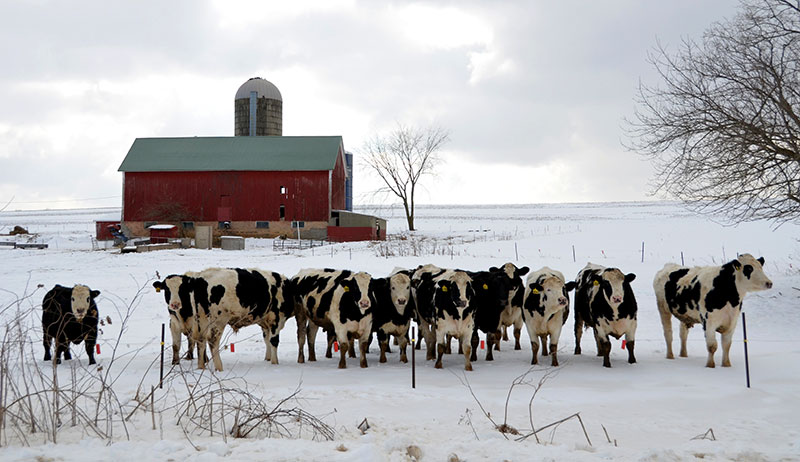
As the cold weather draws near, it can be tempting to shut barn doors to keep everyone, including yourself, nice and cozy Resist that temptation. A poorly ventilated barn festers with moist air that’s rich in mold spores, ammonia toxins and a soup of other pathogenic microorganisms. In other words, a barn with poor ventilation is a powder keg for winter health woes, most of which involve respiratory disease, no matter what species you have. Here are some easy tips to make sure your barn is reasonably ventilated for all critters under the roof.
1. Open the Windows
Many horse barns have windows in each stall. Although you might be inclined to shut these tight, during the day keep them open unless precluded by heavy winds or precipitation. This helps directly ventilate stalls, carrying harmful dust and ammonia fumes up, out and away from sensitive noses. At night, you can close them for security and to guard against chilling.
2. Keep Aisle Doors Open
Aisle doors are just really big windows, aren’t they? And like our window rule, let’s try to keep those big doors open, preferably at both ends of the barn to carry fresh air all the way through the structure. If it’s really windy outside, or bitterly cold, having the doors half or a quarter of the way open is perfectly fine. As long as there’s some airflow through the barn during the day, we’ve reached our goal.
3. Keep Animals Out as Much as Possible

Livestock animals are often hardier than we think in cold weather. As long as your pasture has a windbreak and somewhere the animals can go for protection against heavy precipitation, such as a run-in shed, your livestock should be outside for a majority of the winter. This means fewer stalls to clean for your sake, as well.
4. Control Dust
Minimizing dust buildup in the dry winter air within a barn is challenging. If your herd isn’t too large, consider wetting hay before distributing it. This is a necessity in horses with an allergic respiratory condition called recurrent airway obstruction, or RAO, commonly known as heaves. Choosing dust-free bedding might also be an option for you. Wood shavings are a popular choice. Depending on your geographical area, there might also be other options, such as shredded newspaper. If you can store your hay and bedding in another location, that will also help curtail the dust.
5. Maintain Cleanliness
When animals are housed indoors, regular cleanup is the No. 1 priority. Buildup of soiled bedding increases ammonia levels fast, and this chemical is a harsh irritant to the delicate lining of the respiratory system. Daily removal of soiled bedding also helps decrease the moisture in the barn air; the drier the air, the fewer microbes thrive in it.
6. Incorporate Ventilation Into Design
If you’re considering redesigning your barn or building a new one, ventilation should be at the top of your priority list, as it will help keep your animals cool in the summer and warm (and healthy) in the winter. Talk to a builder and your local extension agent about positive pressure designs, which pull fresh air into the building and distribute it evenly throughout.





